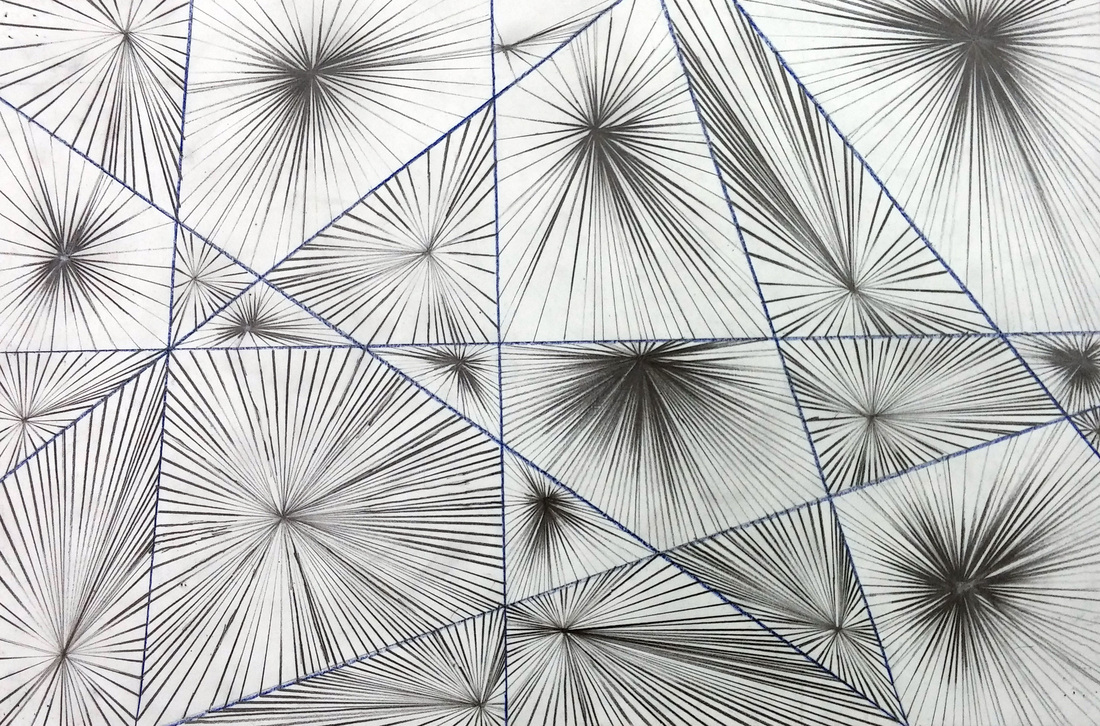This drawing shows how using dark to light and light to dark lines can create a sense of space, movement, and pattern. Which points seem to go out and which seem to sink in? review the art elements and design principles here
To start - divide you large piece of paper into different sections - it's useful to use a colored pencil for this. Make sure you draw one straight line across the horizontal and vertical axis so they will line up.
Put a dot in each section.
make your lines radiate from the dot to the edge of each polygon.
Make sure the lines at the edges of each polygon line up with the adjacent polygons.
To start - divide you large piece of paper into different sections - it's useful to use a colored pencil for this. Make sure you draw one straight line across the horizontal and vertical axis so they will line up.
Put a dot in each section.
make your lines radiate from the dot to the edge of each polygon.
Make sure the lines at the edges of each polygon line up with the adjacent polygons.

 RSS Feed
RSS Feed
